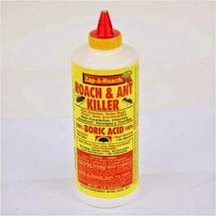This
time of year, stroll down the tool aisle of any garden center and
you'll find a vast array of cutting instruments, all designed with the
backyard gardener in mind. Blade heads of short-handled pruners and long-handled loppers usually come in two different styles: bypass and anvil.
Bypass loppers
or pruners have a stainless steel curved blade that uses a scissors
action to pass next to, not on top of, the lower surface, sometimes
called the hook, designed to catch and hold the branch while the
cutting blade comes down.
 The cutting blade of anvil-style pruners comes down onto the center of a soft metal or hard plastic lower surface, called the anvil or table. Anvil
pruners tend to crush the soft tissue of the stem, stopping the flow
of nutrients, prolonging the healing time for the cut surface.
The cutting blade of anvil-style pruners comes down onto the center of a soft metal or hard plastic lower surface, called the anvil or table. Anvil
pruners tend to crush the soft tissue of the stem, stopping the flow
of nutrients, prolonging the healing time for the cut surface.
 |
| Felco #2 Bypass Pruners |
 |
| Corona Bypass Pruners |
 The cutting blade of anvil-style pruners comes down onto the center of a soft metal or hard plastic lower surface, called the anvil or table. Anvil
pruners tend to crush the soft tissue of the stem, stopping the flow
of nutrients, prolonging the healing time for the cut surface.
The cutting blade of anvil-style pruners comes down onto the center of a soft metal or hard plastic lower surface, called the anvil or table. Anvil
pruners tend to crush the soft tissue of the stem, stopping the flow
of nutrients, prolonging the healing time for the cut surface.
Despite the bypass pruner's
benefits, garden centers still offer a nearly equal number of
anvil-style pruners and loppers, a never-ending source of confusion for
the gardener hunting for cutting tools.
So, we asked area garden experts their pruning preference: bypass or anvil?
So, we asked area garden experts their pruning preference: bypass or anvil?
The late Sacramento County Farm
Advisor, Chuck Ingels, preferred bypass pruners. "I never use anvil
pruners because you often can't cut close enough to the branch collar
without leaving somewhat of a stub," said Ingels. "When they begin to
wear, they often don't cut all the way through. Also, they crush the
bark, which bypass pruners can do also, but you can turn the shears so
the blade is closer to the collar and make a clean cut."
"I don't use and usually do not
recommend anvil pruners," says Luanne Leineke, formerly the Community
Shade Coordinator for the Sacramento Tree Foundation.
"I tend to see too many wounded branches, particularly when the bark
is soft. I suggest using bypass pruners for up to three quarters of an
inch-thick branches, loppers for up to one inch thickness and a hand
saw for anything larger."
Pete Strasser, former plant
pathologist with Sacramento's Capital Nursery, has only one use for
anvil pruners. "Anvils are for deadheading annuals, and that's about
it."
Loren Oki, Landscape Horticulture Specialist with UC Cooperative Extension in Davis,
also has limited use for anvils: "I was taught that bypass pruners
were used on live material, whereas the anvil types were better for
dead wood. The bypass type cuts cleaner through the softer material
without causing much damage."
Steve Zien, owner of the Citrus Heights-based organic landscape consulting business, Living Resources,
leaves no doubt to his preference: "I would never use anvil pruners!
Never ever, unless something needed to be pruned right then and there,
and it was the only tool I had beside my teeth."
Bottom line: Bypass pruners are much more versatile than anvil pruners. Every gardener should own a pair of bypass pruners.
But a word of warning: don't force cut a branch with bypass pruners that were not meant to cut a larger branch. Using too much force to work the blade through the wood could damage the entire unit. If those bypass pruners are advertised as cutting through one-inch branches, don't exceed that limit.
Move up to a larger cutting tool for those bigger branches, such as bypass loppers, a small branch saw (my favorite), a bow saw, or when you finally realize that "Life is too short to put up with a problem plant", a good quality chain saw.
Perhaps have a pair of small anvil pruners for the cut flower garden. And larger anvil ratchet loppers for removing dead wood.

Finally, whatever you purchase, buy quality. Look for pruning tools that have replaceable parts (blades, springs,etc) that can easily be disassembled for cleaning, sharpening, oiling, and maintenance.
Bottom line: Bypass pruners are much more versatile than anvil pruners. Every gardener should own a pair of bypass pruners.
But a word of warning: don't force cut a branch with bypass pruners that were not meant to cut a larger branch. Using too much force to work the blade through the wood could damage the entire unit. If those bypass pruners are advertised as cutting through one-inch branches, don't exceed that limit.
Move up to a larger cutting tool for those bigger branches, such as bypass loppers, a small branch saw (my favorite), a bow saw, or when you finally realize that "Life is too short to put up with a problem plant", a good quality chain saw.
Perhaps have a pair of small anvil pruners for the cut flower garden. And larger anvil ratchet loppers for removing dead wood.

Finally, whatever you purchase, buy quality. Look for pruning tools that have replaceable parts (blades, springs,etc) that can easily be disassembled for cleaning, sharpening, oiling, and maintenance.




























